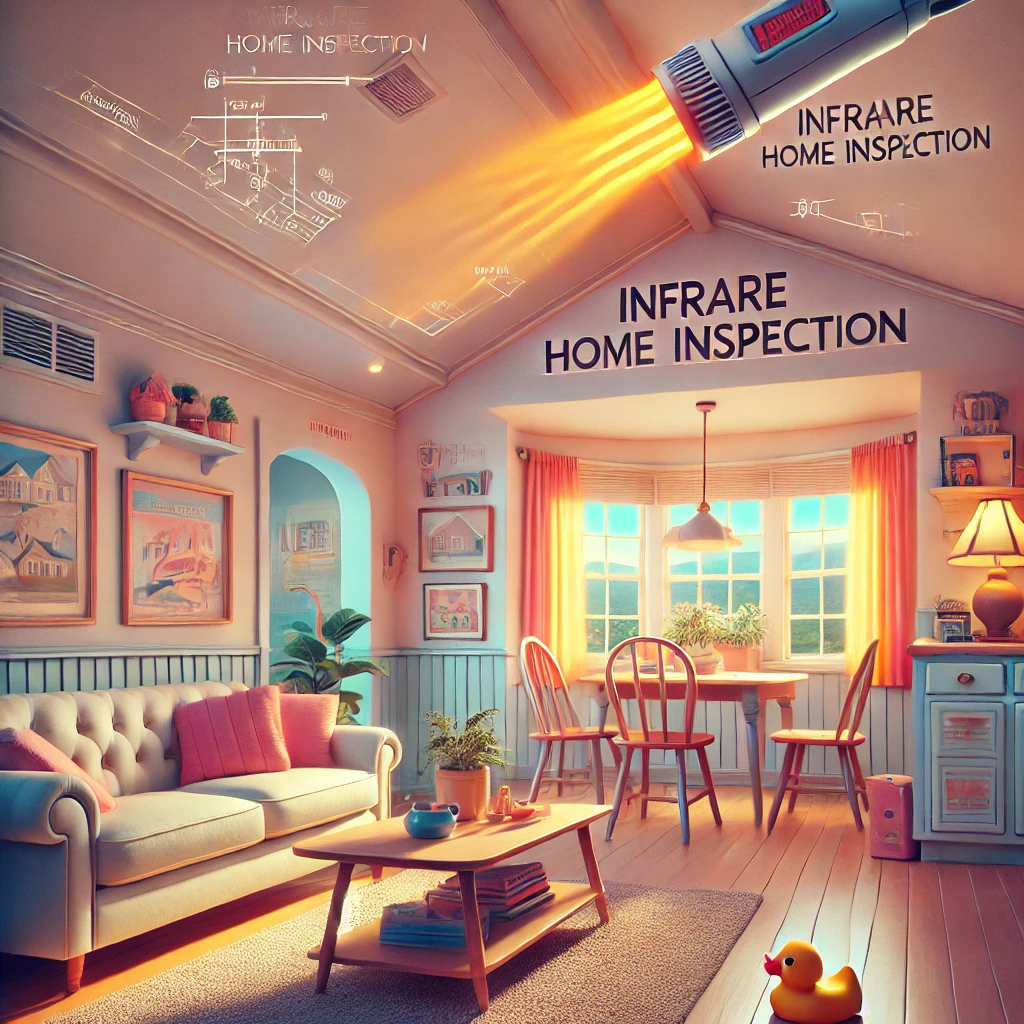The Magic Lens of Infrared Scanning
Infrared scanning – two words that spell the difference between near-perfect and complete restoration. To the unaided eye, a restored property may seem perfect – but how sure are we that every hidden corner and inaccessible crevice is free of damage? Infrared scanning technology provides the answer. Offering precision in damage assessment and assurance for complete restoration, this groundbreaking technology is redefining the repair and recovery process after water, fire, or mold damage.
Unmasking the Hidden Damages
Traditionally, damage restoration involved a considerable amount of guesswork. Damage caused by fire, water, or mold often extends beyond what is immediately visible. With infrared scanning, it’s possible to uncover hidden damages that would have otherwise gone unnoticed. Studies show that this technology can detect temperature differentials, indicating the presence of moisture, heat damage, or mold in walls, ceilings, and floors. This precise damage detection ensures a thorough assessment leading to complete restoration.
From Assessment to Action: Efficiency and Accuracy
The precision and effectiveness of infrared scanning not only help in comprehensive initial damage assessment but also in guiding the entire restoration process. This superior technology allows professionals to efficiently implement effective restoration techniques and equipment, ensuring that every nook and corner of the property is restored to its former glory.
Enabling Better Health and Safety Standards
Damage caused by water or fire often leads to damp, moldy conditions which pose significant health risks. By using infrared scanning, restoration teams can spot these dangerous conditions before they become a health hazard, demonstrating a proactive approach towards health and safety. This advanced technology takes the guesswork out of detecting potential hazards, adding an extra layer of protection for homeowners and property managers alike.
Insurance Claims and Legal Compliance
Restoration after substantial damage is often accompanied by insurance claims, and sometimes, legal issues. Thankfully, the accurate readings provided by infrared scanning can provide solid evidence of the damage extent, potentially aiding in insurance claims and ensuring legal compliance.
Unparalleled Customer Communication
In the high-stress aftermath of property damage, clear and effective communication with customers is crucial. Thanks to infrared scanning technology, it’s now possible to offer customers tangible proof of both visible and hidden damage. Through this, customers can truly understand the extent of damage, why certain restoration methods are selected, and how progress is being made. This greatly enhances the transparency and clarity of customer communication, reinforcing trust and satisfaction.
Leading the Charge in Crisis Management
In a crisis situation, prompt action and efficient management can greatly minimize damage and expedite recovery. When it comes to complete restoration of properties, infrared scanning technology is undeniably a game-changer. It expedites the assessment process by rapidly identifying areas of concern, enabling an early start to the restoration work.
As we continue to explore the pivotal role that infrared scanning plays in damage restoration, one thing is crystal clear— this is a cornerstone of innovative restoration technology. It empowers professionals to accomplish their tasks with unprecedented accuracy and efficiency, delivering on the promise of complete restoration.
Indeed, the incredible power of infrared scanning technology is revolutionizing the restoration industry. Its benefits extend far beyond simple damage identification. It ensures that the restoration process is accurate, comprehensive, and efficient, greatly enhancing the security, safety, and peace of mind of homeowners and property managers. For those interested in learning more about advanced restoration techniques, we encourage you to visit our mold remediation project. The future of restoration is here— and it’s more accurate and complete than ever before.
Enhancing the Restoration Process with Infrared Scanning
Undoubtedly, infrared scanning technology is enhancing the restoration procedure at various levels. When implemented effectively, infrared scanning can reveal the extent of the damage that would otherwise remain unseen. This technology provides a nearly foolproof method of detecting and assessing any potential harm.
Detecting Invisible Threats
Infrared scanning technology continues to innovate in the realm of damage restoration. This technology can easily identify hidden threats like excessive moisture, making it an essential tool not only for initial damage identification but also for monitoring the effectiveness of drying and restoration techniques. This way, restoration professionals can guarantee that even the invisible threats have been addressed, ensuring the longevity and safety of the property.
Envisioning Restoration with Advanced Technology
Based on the science of thermography, this invaluable tool uses temperature differences to reveal hidden realities behind walls, floorboards, and ceilings. By converting these temperatures into visible, understandable images, infrared scanning technology offers an unprecedented way to visualize the restoration process.
The Green Advantage: Environmental Compliance
In addition to its obvious benefits, infrared scanning also helps to maintain environmental compliance. It aids restoration teams in preventing excess waste through precise problem detection, cutting down unnecessary demolition, and disposal activities. This contributes to more sustainable, environmentally-friendly restoration processes, helping businesses meet their CSR goals and work towards a greener future.
Building Trust through Infrared Scanning
Due to its unparalleled precision, infrared scanning is also a powerful tool for establishing trust and transparency with clients. The clear, easy-to-understand images that infrared scanning generates can allow clients to see for themselves the extent and nature of the damage their property has sustained. This transparency not only enhances customer communication but also fosters stronger, more trust-based relationships between the restoration professionals and their clients.
Saving Time, Money and Effort
The efficient detection and assessment capabilities of infrared scanning can also lead to significant savings in time, money, and effort. Being able to pinpoint exactly where the problem areas are means that restoration professionals can focus their efforts more precisely. This results in faster and more cost-efficient restorations, saving both the restoration team and the property owner invaluable resources.
Moving Forward
Ultimately, the drive towards advanced technology in the restoration industry is inevitable. Among these advancements, infrared scanning stands out as a groundbreaking innovation that is already transforming the landscape of damage restoration. It offers a new level of accuracy, efficiency, and transparency – aspects that are highly valued by industry professionals and property owners alike.
The widespread implementation of this technology will inevitably lead to better restoration outcomes, improved customer communication and crisis management, and stronger adherence to environmental and health safety standards. It is not just about pushing the boundaries of what is possible in damage restoration; it is about setting new standards and raising the bar for the entire industry.
To learn more about how infrared scanning is progressing the field of restoration, please visit our latest publication on innovative restoration techniques.
As we continue to investigate and leverage this powerful technology, we look forward to keeping you updated on the latest developments. The future of restoration is not just here – it continues to evolve, promising more accurate, efficient, and complete restoration processes. Stay tuned as we continue to explore the cutting-edge world of damage restoration technology.
References
For further reading and exploring the scientific aspects of infrared scanning, we encourage you to delve into these studies:
– The Clinical Guide to Infrared Scanning.
– This informative article on the principles of Infrared Thermography.
– An insightful journal explaining the use of thermal imaging in various sectors, including restoration.
Thank you for your readership and we look forward to guiding you further into the future of restoration. Stay updated with more informative posts on technology’s role in property restoration.

